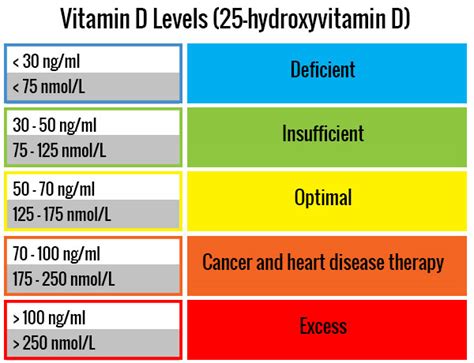Intro
Vitamin D is an essential nutrient that plays a critical role in maintaining strong bones, immune function, and overall health. Despite its importance, many people are unaware of their vitamin D levels, which can lead to deficiencies and related health problems. A vitamin D test is a simple and effective way to determine your vitamin D levels and take corrective action if necessary. In this article, we will delve into the importance of vitamin D, the benefits of testing, and what you can expect from a vitamin D test.

What is Vitamin D?
Vitamin D is a fat-soluble vitamin that is produced in the skin upon exposure to sunlight. It can also be obtained through dietary sources, such as fatty fish, egg yolks, and fortified dairy products. Vitamin D plays a crucial role in maintaining strong bones by regulating calcium levels, immune function, and reducing inflammation.
Why is Vitamin D Important?
Vitamin D is essential for maintaining strong bones, immune function, and overall health. It helps regulate calcium levels, which is necessary for building and maintaining strong bones. Vitamin D deficiency has been linked to various health problems, including osteoporosis, diabetes, cardiovascular disease, and certain types of cancer.
Benefits of Vitamin D Testing
Vitamin D testing can provide valuable insights into your vitamin D levels, allowing you to take corrective action if necessary. Some benefits of vitamin D testing include:
- Identifying vitamin D deficiency: Vitamin D testing can help identify deficiencies, which can lead to health problems if left untreated.
- Preventing health problems: Vitamin D testing can help prevent health problems, such as osteoporosis, diabetes, and cardiovascular disease, by identifying deficiencies early on.
- Optimizing vitamin D levels: Vitamin D testing can help optimize vitamin D levels, which can improve overall health and well-being.

What to Expect from a Vitamin D Test
A vitamin D test typically involves a blood test, which measures the level of vitamin D in your blood. The test is usually performed in a healthcare setting, such as a doctor's office or laboratory. Here's what you can expect from a vitamin D test:
- A healthcare professional will draw a sample of your blood using a needle.
- The blood sample will be sent to a laboratory for analysis.
- The laboratory will measure the level of vitamin D in your blood using a specialized test.
- Your healthcare professional will review the test results and discuss them with you.
Interpreting Vitamin D Test Results
Vitamin D test results are typically reported in nanograms per milliliter (ng/mL). The normal range for vitamin D levels varies depending on the laboratory and the individual's age, sex, and health status. Here are some general guidelines for interpreting vitamin D test results:
- Normal: 30-50 ng/mL
- Insufficient: 20-29 ng/mL
- Deficient: <20 ng/mL

What to Do if You Have a Vitamin D Deficiency
If you have a vitamin D deficiency, your healthcare professional may recommend the following:
- Supplements: Vitamin D supplements can help raise vitamin D levels.
- Dietary changes: Increasing dietary sources of vitamin D, such as fatty fish, egg yolks, and fortified dairy products, can help raise vitamin D levels.
- Sunlight exposure: Spending time outdoors, especially during peak sunlight hours, can help raise vitamin D levels.
Preventing Vitamin D Deficiency
Preventing vitamin D deficiency is easier than treating it. Here are some tips for preventing vitamin D deficiency:
- Spend time outdoors: Regular sunlight exposure can help raise vitamin D levels.
- Eat vitamin D-rich foods: Include vitamin D-rich foods, such as fatty fish, egg yolks, and fortified dairy products, in your diet.
- Take supplements: Vitamin D supplements can help raise vitamin D levels, especially during winter months or for individuals with limited sunlight exposure.

Conclusion
Vitamin D testing is a simple and effective way to determine your vitamin D levels and take corrective action if necessary. By understanding the importance of vitamin D, the benefits of testing, and what to expect from a vitamin D test, you can take control of your health and well-being. If you're concerned about your vitamin D levels, consult with your healthcare professional about getting tested.
What is the normal range for vitamin D levels?
+The normal range for vitamin D levels varies depending on the laboratory and the individual's age, sex, and health status. Generally, a level of 30-50 ng/mL is considered normal.
What are the symptoms of vitamin D deficiency?
+Vitamin D deficiency can cause a range of symptoms, including fatigue, weakness, and bone pain. In severe cases, it can lead to health problems such as osteoporosis, diabetes, and cardiovascular disease.
Can I get vitamin D from sunlight?
+Yes, you can get vitamin D from sunlight. Spending time outdoors, especially during peak sunlight hours, can help raise vitamin D levels.
